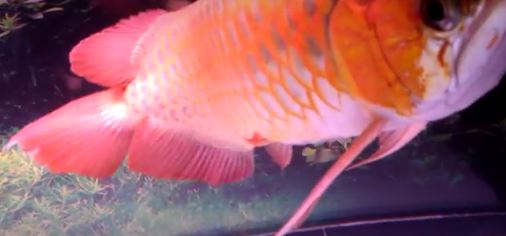Betta Fin Rot; Treatment and Prevention.
This applies to most ALL fish (from cichlids to arowanas), but since I get so many emails and questions pertaining to Betta Fish, I use Bettas as the main example/subject of this article (however this article applies to ALL aquarium fish!!).
By Carl Strohmeyer-PAMR 40+ years experience
Updated 5/9/23
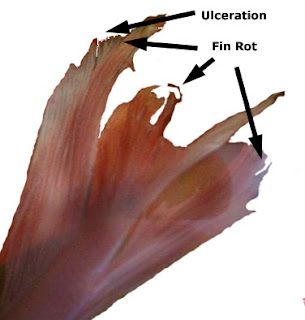
Let me first start out by noting that "Fin Rot" is a generic term that does not define any one disease, rather there are many causes of this Symptom; of which Fin Rot is better described as a symptom with more than one cause.
Often Fin Rot is brought on by injury (long finned fish in particular) or ammonia/nitrite poisoning, so when one considers either treating or preventing the symptom of Betta Fin Rot, these are first places to start.
As well opportunistic bacteria such as Columnaris, Pseudomonas, or Aeromonas can result in fin rot.
Occasionally opportunistic fungii (Saprolegnia) can also result in fish rot, often taking advantage of fish weakened by other causes.
See a picture further into this article for a picture of a Betta with Columnaris induced fin rot.
Reference: Columnaris in Fish
It is also noteworthy that often the healing process includes a stage of black edges on the fins, THIS IS NOT A DISEASE! Thinking this black edge is fin/tail rot while continuing to treat with medications only makes pathogens more resistant and can degrade the bio filter too.
It should also be pointed out that often if the fin/tail rot has progressed well into the "ray" full regeneration fins simply will NOT happen!
As we treat fish fin & tail rot, we have to remember that we are both fighting infection and promoting healing.
Continuing to add antibiotics after infection or danger of infection is gone is not necessary and may actually cause more harm than good (as it is can harm the bio filter bed and lead to bacterial resistance).
If the fin rays are damaged, likely these will not grow back. Even external tissue often never fully returns (think about how many lizards can loose their tails, but it never fully grows back).
After infection or danger of infection has passed as healing progresses, at most, medicated slime coat products such as AAP Quinex should be used.
Finally, especially as per Bettas, genetics and age can lower a fish resistance to disease.
Unfortunately the popularity of bettas (& other fish) has led to the in-breeding of Bettas that has resulted in genetically weak fish. As well often these same less-than-scrupulous breeders will dump older Bettas on the market after their useful breeding life has passed, so a Betta you purchase may not only be genetically weak, but much older than you think! This is especially common of Bettas sold to discounters such as Walmart and chain pet stores.
The end result is a Betta that is predisposed to diseases, including fin rot, and even treatments that may work under normal circumstances will not with these fish.
Before any aquarium/pond fish treatment it is important to know all the steps as often treatment is much more than dumping medication into an aquarium.
Please read this article before ANY aquarium treatment regimen:
Fish Diseases | How to Treat Sick Fish
As well as this complete article:
Aquarium Medications, Part 1; Water Changes and more
ADVERTISEMENT
Here are several points, generally in order of importance to check if your Fish (Betta or otherwise) has or continues to contract symptoms of fin rot (please note that many if not most cases of fin/body "rot" are environmental, so fixing/correcting the environment is always important):
- Make sure your aquarium/bowl is as close to 0 in ammonia or nitrites at ALL times.
If your water starts at 0 ammonia, but by the end of the week on "water change day" the level is up to 1 ppm, this is unacceptable! Do not allow your ammonia level to exceed .5 ppm
I cannot emphasize how often I have traced back cases of Betta Fin Rot (of of more than one bacterial pathogens) to ammonia levels that are constantly in flux!
Personally I recommend a small Sponge Filter (such as the Hydro Sponge Mini)if at all possible for a healthy bio filter.
Recommended Product Sources:
*High Bio Capacity Sponge Filters only from AAP
*Hydro Sponge Mini, Betta Filter
 However I realize that many Bettas are kept in small tanks/bowls where this is not possible, but even then keeping a small amount of Matrix Bio Media (or similar high pore/capacity bio media) in a medicine/prescription bottle with holes punched/drilled in the sides to allow water through the container, while not allowing the Betta to drag his/her delicate fins across any potentially abrasive surfaces.
However I realize that many Bettas are kept in small tanks/bowls where this is not possible, but even then keeping a small amount of Matrix Bio Media (or similar high pore/capacity bio media) in a medicine/prescription bottle with holes punched/drilled in the sides to allow water through the container, while not allowing the Betta to drag his/her delicate fins across any potentially abrasive surfaces.
Please click on this picture to enlarge.Product Source: AAP Matrix; Ammonia, Nitrates, Removing Bio Medium
Please also read: Aquarium Nitrogen Cycle - Water Chemistry parameters, other than Nitrogen Cycle (ammonia, nitrites, etc.).
These parameters, along with a low ammonia & nitrites are important for controlling many fish diseases, not just fin rot. In fact if you are dealing with and old and/or genetically weak fish, water parameters will probably help as much as many medication treatments.
This is an area where I think many misunderstandings/mistakes are made along with ammonia spikes.
Often in emails, forums, and my previous aquarium maintenance "Fish Doctor" house calls, I have found that fishkeepers tend to worry about pH and use products attempting to "nail down" "hard" ph numbers while ignoring KH and positive mineral ions.
See also: Aquarium Chemistry; A to Z, Beginner to Advanced
The KH; which are alkaline buffers plus acid buffers are more essential than a specific pH (within reason as obviously a pH of 5 or 9 is not acceptable).
These buffers maintain a stable pH and just as importantly carbonate hardness (KH) maintains a healthy nitrogen cycle as without these carbonate buffers your nitrifying bacteria cannot thrive and you end up with even more dangerous ammonia spikes!
Generally speaking I would recommend a KH of 50-150 ppm (for Bettas) and your pH will be just fine for Bettas as long as it is STABLE at some number between 6.5 to as high as 8.2
Reference: Betta Habitat
Simply put, do not chase pH in an attempt to find the perfect pH. Find an acceptable KH and stick with it, even if the pH is higher than desired as a bouncing pH can cause more disease inducing stress than the actual pH number.
The second part of Aquarium Chemistry (GH, KH, pH) that is also important (if not more so) and also missed by many is the need for positive mineral ions (electrolytes) in the water for a healthy Betta (or other fish) immune system.
Often Betta Keepers will use RO, Drinking, or Distilled Water without adding back these ESSENTIAL elements.
Even when tap water is used, often products such as "pH down" or "7.0" are employed, which when used alone can drive out some essential mineral ions.
Further Reference: Aquarium Chemistry; Positive Mineral Ions, GH
The use of too much incorrectly treated RO water can result in Redox stress, although the flip side is attempting to make up for neglect in adding positive mineral ions too quickly which also can add stress (both are similar to rapid pH changes).
Another chemistry stressor is oxidative stress often from un-treated tap water or a too high/unbalanced Redox reading (best measured via relative hydrogen/rH).
Even long term feeding of a diet too high in energy levels can add oxidative stress to a fish that can eventually make a fish more susceptible to causes of fin rot. Diet is often a two edged sword for Bettas, since many Bettas can be difficult to get to eat lower energy diets. But with other fish, in particular Cichlids where they are generally much easier to acclimate to long term healthier diets, I have found, many will continue to feed diets that slowly add to oxidative stress.
Any of these before mentioned stressors can lead to a Columnaris infection that can then in turn lead to a case of Columnaris induced fin rot (which is often a much more difficult to treat fin rot when compared to a minor cases of simply ragged fins).
Further Reference: Importance of Aquarium Redox
Best is a balanced approach which includes actually maintaining GH (of over 100 ppm) if only to maintain these essential mineral ions (cations) which are depleted quickly even though your GH test kit shows a higher GH.
Using products such as driftwood fragments, Peat, Pillow Moss (AKA Frog Moss) or Atisons Spa for their Indian Almonds leaves to naturally provide a tannin acid buffer along with Alkaline Buffers such as SeaChem Alkaline Buffer is a must for use with RO water and even some tap waters.
Recommended Product Sources:
*Aquarium Driftwood
*Pillow/Frog Moss; Premium Natural Acid Buffer
*SeaChem Quick Acting Acid Buffer
*AAP/Atisons Betta Spa (combines Almond Leaf & calcium Cations)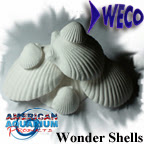 Then the use of products such as Original AAP Wonder Shells to provide a constant supply of positive mineral ions is very helpful, if not essential in small tanks/bowls to aid in constant replenishment (water changes help too).
Then the use of products such as Original AAP Wonder Shells to provide a constant supply of positive mineral ions is very helpful, if not essential in small tanks/bowls to aid in constant replenishment (water changes help too).
I recommend using 1/4 to half the recommended Wonder Shell, at least initial (by breaking in half with a flat head screwdriver), as the main goal is a constant replenishment of mineral cations, not a higher GHThese mineral blocks come in sizes small enough for a fish bowl and can be used with Pillow Moss or even driftwood fragments to act as an acid buffer.
Pillow Moss can be placed in aquarium filter bags (such as by Lees) to prevent it from coming apart if used directly in the aquarium.Recommended Product Sources:
Please read for much more; a must read!!
*Wonder Shells; Mineral Cation Replenisher; Unique Version ONLY sold at AAP (only reliable source for FRESH Wonder Shells which means the full benefit of Redox improving mineral Cations are present)
*Filter Bags
Aquarium Chemistry, SE Asia Water - Injury is another potential issue with Bettas along with Cory Cats and often more so with larger fish;
With Bettas & Cory Cats, make sure you have smooth decorations (such as marbles). Cory Cats often injure their fins on sharp substrate, so make sure to use "soft" sands for these fish
Also watch for reflections that may make your Betta chase his tail (like a dog!); in fact if your Betta is dealing with symptoms of tail rot, I strongly recommend covering your tank/bowl with a towel or similar for a calming effect that can and does help.
For larger fish, less jagged decorations also apply. With fish such as Arowanas, sometimes a bare bottom tank can prevent the fish from injuring their fins as they might dive to the bottom for food sources.
However, sometimes with large fish, there is little you can do as the constraints of an aquarium can lead to a large fish simply injuring itself on the glass. Again, this is ESPECIALLY common with Arowanas where many cannot even turn around in the width of the aquarium often used to house them.
The picture below shows an Arowana with fin rot most likely caused from constant contact with the glass.
These collisions are not just for larger fish either, Bettas often collide with rocks or other decor with their long flowing tails (especially acting aggressively).
Often minor to moderate fin/tail rot from injuries caused by collisions with the tank side or objects within the aquarium are best treated either with AAP Melafix and Pimafix, directly with AAP Res-Q, OR BETTER if damage is more noteworthy, for more wide spectrum treatment; a Medicated Wonder Shell combined with AAP Sulfaplex (which also improves certain water parameters too to further help with healing).
Section 5 goes into more detail about this treatment toward the end of the section.Beware of the unfortunately growing in popularity diagnosis (myth) of stress related Betta tail biting as a cause of tail rot.
While this was dismissed decades ago by research and aquarium professionals, this diagnosis has grown wings due to cut & paste blogs and social media where professional aquarium history and mentoring is disregarded.
The problem here with perpetuating this myth is that the real cause of the tail rot is not explored such as injury from decor, aggression (including self aggression), high amounts of decomp (a source of common Aeromonas and Fungal/Saprolegnia infections), & many more possibilities.
The result has been many a Betta keeper ignoring real symptoms and causes of an infection and their Betta suffers or even dies!!
Reference/Further Reading: Common Aquarium Myths; Betta Tail Biting -
Recommended Product Sources: One of the first actual treatments I would consider for fish up to 6 inches is a Medicated Fish bath that includes salts (Sodium Chloride & Epsom), Methylene Blue, and for moderate to serious fin rot issues, a mix of antibiotics Nitrofurazone and Kanamycin.
One of the first actual treatments I would consider for fish up to 6 inches is a Medicated Fish bath that includes salts (Sodium Chloride & Epsom), Methylene Blue, and for moderate to serious fin rot issues, a mix of antibiotics Nitrofurazone and Kanamycin.
However with larger fish, a Fish Bath is often not viable option as they are often more difficult to handle for a bath.
*AAP MethyBlu (Premium Methylene Blue)
*Sulfaplex (Sulfathiazole) from AAP
*Methylene Blue Aquarium Bath Treatment; from AAP
*AAP Quinex; Slime Coat Medicated Treatment/Conditioner
*AAP Yellow Powder (Vastly superior Nitrofurazone compared to Furan 2)
*Furan 2 (Nitrofurazone); from AAP
*Kanaplex (Kanamycin); from AAP (please support this free information with your purchase from AAP instead of discounters)
Methylene blue is very helpful for fin rot and ulcerations caused by ammonia or nitrite poisoning.
However Methylene Blue is not as a strong an antibacterial for gram negative bacteria, which is why for ammonia burn combined with fin/tail rot, the best choice would be AAP Nitrofuracin Green (Synergistic Nitrofurazone, Sulfathiazole Sodium, & Methylene Blue Full Spectrum Treatment).
Product Source: AAP Nitrofuracin Green; Synergistic Nitrofurazone, Sulfathiazole Sodium, & Methylene Blue Full Spectrum Treatment
If these baths are ineffective, I would switch to Potassium Permanganate (which is a stronger oxidizer). Potassium Permanganate should be used only with salt and NO antibiotics.
Also be careful about over dosing with Potassium Permanganate as it is a strong oxidizer where you are essentially oxidizing the "fin rot" more than the fish!
Product Source: Jungle Potassium Permanganate, Clear Water
Merbromine, Potassium Permanganate (diluted approximately 50% to 60%), OR Hydrogen Peroxide can also be used as a "swab" on damaged fins or other areas of infection.
Of the three, Merbromin is both the safest AND the most effective when used as a swab. In fact Merbromin is extremely effective against Columnaris and Aeromonas (being an organomercuric disodium salt compound and a fluorescein that is effective on external infections because of its permanence, and lethality to bacteria).
Reference: Columnaris; Treatments, Merbromin
Product Source: AAP Merbromin
When additional medications are called for due to bacterial or fungal infections, using AAP Nitrofuracin Green is a go to product . This product is already re-mixed in a powder that contains Methylene Blue, Salt, and key anti-microbrials such as Sulfa & Nitrofurazone.
While in tank use suggests one capsule per 5 gallons, bath treatment use would be one capsule per 2.5 gallons per 20-30 minute fish bath.
Product Source: *AAP Nitrofuracin Green; Synergistic Nitrofurazone, Sulfathiazole Sodium, & Methylene Blue Full Spectrum Treatment An EXCELLENT ready made Bath treatment!
See this Aquarium Answers post for more about how to perform such a bath or swab:
How to Perform a Fish Bath, Medicated, Salt, more
For more about Hydrogen Peroxide:
Aquarium Medications 3, Hydrogen Peroxide
Please read these in depth reference articles and consider the suggestions and treatments there in: Next, assuming your Betta or other fish (such as an Oscar or Arowana) actually has a bacterial infection you may have to start an in tank treatment. The most common bacterial causes of fin rot being Columnaris & to a lesser extent Aeromonas Bacterium.
Next, assuming your Betta or other fish (such as an Oscar or Arowana) actually has a bacterial infection you may have to start an in tank treatment. The most common bacterial causes of fin rot being Columnaris & to a lesser extent Aeromonas Bacterium.
Pseudomonas bacterium may be the cause of mild fin rot infections in which the fish generally only display frayed fins and black fin edges.
*Columnaris in Aquarium Fish
*Aquarium Aeromonas, Septicemia, more
The picture to the right displays a Betta with Columnaris induced Fin Rot, please click to enlarge (though not all fin rot is caused by Columnaris)
 A good/often effective "in tank" treatment would be the before mentioned (for fish baths) Nitrofurazone and Kanamycin combination, especially if Columnaris or Aeromonas is the cause.
A good/often effective "in tank" treatment would be the before mentioned (for fish baths) Nitrofurazone and Kanamycin combination, especially if Columnaris or Aeromonas is the cause.
The best choice here would be the synergistic combination of Kanaplex & AAP Yellow Powder (more effective and synergistic formula of Nitrofurazone).
Sometimes just Nitrofurazone is needed, especially if the cause is due to Furunculosis or ammonia poisoning.
For this the most effective product is AAP "Yellow Powder" which is more pure and effective and only needs treatment every other day versus once per day with the inferior product "Furan 2".
If the cause of the fin/tail rot (or frayed fins) is from an opportunistic fungal/Saprolegnia infection, a good choice for treatment is AAP/SeaChem ParaGuard or AAP Medicated Wonder Shells combined with AAP/SeaChem Sulfaplex/Sulfathiazole.
Product Sources:
*AAP Yellow Powder (Vastly superior Nitrofurazone compared to Furan 2)
*AAP/SeaChem Kanplex (please support this free information with purchases from AAP instead of discounter that will not be there for you when you need help)
For Bettas and other smaller long tailed fish such as Guppies, an excellent preventative and treatment of moderate fin/tail infections as well as loss of color and listlessness is AAP Nitrofuracin Green. This product safely blends Synergistic Nitrofurazone, Sulfathiazole Sodium, Methylene Blue, and NaCl.
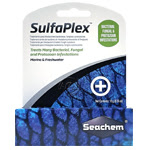 Another alternative (which can also be used in baths) is Sulfathiazole.
Another alternative (which can also be used in baths) is Sulfathiazole.
This is an excellent broad spectrum alternative to the Kanamycin/Nitrofurazone combination and although generally not as "strong" a treatment, it is occasionally effective when the Kanamycin/Nitrofurazone combination is ineffective.As well Sulfathiazole is generally less harsh on the fish and is a good choice for generally less difficult cases of fin rot with Pseudomonas as the bacterial cause. Sulfathiazole can also be combined with AAP Super Ich Plus or ParaGuard to make for a bit stronger and more wide spectrum treatment.
OR as mentioned earlier, combined with AAP Medicated Wonder Shells for arguably one of the most effective and wide spectrum fin/tail rot treatments you can use!If Aeromonas is the cause, sometimes Doxycycline will be the most effective "in tank" treatment.
Product Source: AAP Fin & Body Cure (Doxycycline)Another sometimes recommended product for fin rot is Tetra Fungus Guard (sometimes in combination with Kanamycin). HOWEVER this can be a dangerous mix as Tetra Fungus Guard contains Potassium Dichromate (a strong oxidizer) which if used for open wounds or blood infection (Septicemia) can be toxic, sometimes leading to eventual death. Often a "tell tale" sign of toxic poisoning is color changes to the fish.
Product Sources:
Reference: Aquarium Medications Part 3; Potassium Permanganate & Dichromate
*Sulfaplex (Sulfathiazole) from AAP
*Maracyn Plus from AAP with Sulfamethazine and Trimethoprim- If this is a serious infection, most often these are caused by gram negative bacteria and treatment with primarily gram positive antibiotics such as Tetracycline or even Maracyn 2 (to a slightly lessor extent) will often be futile as the vast majority of aquarium bacterial infections are gram negative.
Columnaris, Pseudomonas, & Aeromonas are ALL Gram negative so if someone suggests a gram positive treatment for your fish' fin rot, it is not going to be effective (unless your fish has much less common gram positive infection)!!
Please read these articles for further reference:
*Aquarium Medications 2; Maracyn 2, Minocycline Hydrochloride
*Aquarium Medications Overview; Page One - A serious infection that has more than one cause (multiple pathogens) might require a very strong in tank (or hospital tank) treatment using multiple medications.
A Medicated Wonder Shell combined WITH AAP Furan 2 AND Kanaplex is one strong option. - Another option is AAP PolyGuard which combines malachite green, sulfa, quinacrine, and nitrofurazone (the Medicated Wonder Shell has the benefit of mineral Cations, while the PolyGuard has the benefit of sulfa; DO NOT COMBINE THOUGH!).
- If this is a minor infection, often just the baths and/or a mild in tank treatment may help (assuming correct water parameters as addressed earlier in this article), products such as Medicated Wonder Shells or Pimafix/Melafix can help or even solve the problem.
Melafix or better, Sulfathiazole can be an excellent first aid after a minor fin injury such as damaging a fin on a rock or even the glass in the case of large fish such as Arowanas.
A Medicated Wonder Shell, while not a specific fin rot remedy, it still has medications that are good at addressing common secondary infections such as Saprolegnia, and just as importantly, a Medicated Wonder Shell helps with mineral Cations which in turn helps the fish in its own natural defenses in healing from a minor injury.
When used with Sulfathiazole, a Medicated Wonder Shell becomes an excellent treatment of for fin rot caused by an injury, especially injuries that are the result of collisions with sharp objects or simply the side of the aquarium in the case of large fish.
For Melafix use with Bettas, a pH over 7 and GH over 100 is a must!
Reference:
Melafix Myths, Dangers
Product Sources:
*Medicated Wonder Shells
*AAP Kanaplex
*AAP PolyGuard
*AAP Sulfathiazole
*AAP Melafix
Sometimes Fin Rot, especially when accompanied by clamped fins is simply symptom of a great problem such as systemic bacterial infection (the fish to the right demonstrates such a possible scenario).
This is often a difficult problem to treat because the actual cause might be elusive.In such cases, it is even more important ALL water parameters are in check, not just ammonia, pH, etc, but even GH, KH, and even Redox Balance.
A strong cocktail treatment such as with Naladixic Acic and a Medicated Wonder Shell might be called for in such a situation.
Exemplified in this article: Fish Diseases | How to Treat Sick Fish
Product Sources:
*AAP Naladixic Acid (Naladin)
*AAP Medicated Wonder Shells
*A Healthy Aquarium, Disease Prevention
Even suggested steps such as the use of a Level 1 UV Sterilizer should be considered if at all possible, although usually not practical for the average Betta owner.
However with larger Betta Breeders or similar multi Betta specimen tanks with dividers, the use of a UV Sterilizer may be practical.
Make sure is you are able to employ a UV Sterilizer that you change your UV bulb every six months for optimum efficiency.
Product Sources:
*True Level 1 UV Sterilizers
*Aquarium UV Bulbs, Lamps, Page 1
Other Recommended Reference & Product Sites

Aquarium UV Sterilization
The MOST in depth and accurate article about maintaining level 1 UV Sterilization and how to choose the correct UV Sterilizer

Fish Nutrition
Complete information from fish food building blocks to sources and much more
Hikari Betta Gold Floating Pellets
Includes Astaxanthin, which helps enhance coloration, along with Grape Seed Extract has been shown to reduce the impacts of aging

Atison's Spa Clear; Indian Almond Leaf Conditioner
Clear Betta Spa contains wild almond leaf extract to simulate the natural environment of the native soft water fish.
Other natural botanicals, including Yucca extract, help control ammonia, reduce stress and maintain cleaner water.

Ocean Nutrition Feeding Frenzy Feeding Station
Prevents floating food from being caught in the filter or skimmer. Excellent for Bettas kept in larger aquariums with higher surface flow rates
For a friendly, Knowledgeable, aquarium forum with in a family atmosphere:
Aquarium Forum; Everything Aquatic
*Parasite Retailers
*Planaria & Detritus Worms in Aquarium
 Decorative Coral
Decorative Coral
Aquarium Decorations such as:
*Plastic Aquarium Plants
*Aquarium Driftwood
TMC V2 RO Filter systems; the very best you can buy with TDS meter:
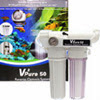 Reverse Osmosis Aquarium Water Filters; with TDS Meter
Reverse Osmosis Aquarium Water Filters; with TDS Meter
A good compliment to RO water or for any freshwater aquarium to add ESSENTIAL Mineral Ions:
*Wonder Shells, Mineral Block

